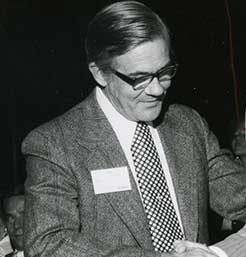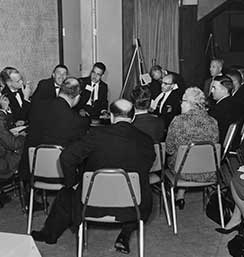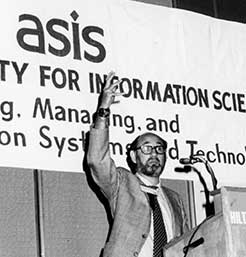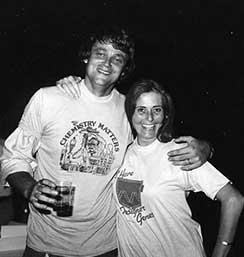History of ASIS&T

1937
Beginnings in Documentation
ASIS&T was founded on March 13, 1937, as the American Documentation Institute (ADI), a service organization made up of individuals nominated by and representing affiliated scientific and professional societies, foundations and government agencies. Its initial interest was in the development of microfilm as an aid to information dissemination.

1950's
Transition to Modern Information Science
As the number of people engaged in developing new principles and techniques in the many areas of documentation and information services increased, the Bylaws were amended in 1952 to admit individual as well as institutional members. Thus, ADI became the national professional society for those concerned with all elements and problems of information science. With the 1950’s came increasing awareness of the potential of automatic devices for literature searching and information storage and retrieval. As these concepts grew in magnitude and potential, so did the variety of professional interests.

1960's
The Information Explosion
During the 1960’s, membership increased sevenfold as the problems created by the “information explosion” became of national concern. Reflecting this change in its total range of activities, as well as the emergence of information science as an identifiable configuration of disciplines, the membership voted to change the name of the American Documentation Institute to the American Society for Information Science. The name change took effect January 1, 1968, and emphasized the fact that the membership of ASIS is uniquely concerned with all aspects of the information transfer process, a national professional organization for those concerned with designing, managing, and using information systems and technology.

1970's
The Move to Online Information
The move from batch processing to online modes, from mainframe to mini and micro computers accelerated in the 1970’s. Traditional boundaries among disciplines began to fade and library schools added “information” in their titles. ASIS stopped administering the ERIC Clearinghouse on Library and Information Services, made the Mid-Year Meeting an annual event focusing on a single topic of current interest, sponsored a bicentennial conference (1976) on the role of information in the country’s development, was an active participant in the planning and implementation of the White House Conference on Library and Information Services, and the Bulletin of the American Society for Information Science appeared and became a mainstay membership publication of the Society.

1980's
Personal Computers Change the Market
By the 1980’s, large databases, such as Grateful Med at the National Library of Medicine, and user-oriented services such as Dialog and Compuserve, were for the first time accessible by individuals from their personal computers. ASIS added to and revised its Special Interest Groups (SIGs) to respond to the changes, establishing groups on office information systems and personal computers as well as international information issues and rural information services. By the end of the decade, SIGs were available involving non-print media, social sciences, energy and the environment, and community information systems and ASIS had its first non-North American Chapters.

2000's
ASIS&T Today
As information and communication technology applications proliferate and encroach ever more on the daily lives of nearly all in the developed world, ASIS&T members are at the forefront in examining the technical bases, social consequences, and theoretical understanding of online databases, widespread use of databases in government, industry, and education, and the development of the Internet and World Wide Web. In 2000, the Society changed its name to American Society for Information Science and Technology (ASIS&T), reflecting the range of its members. In 2013, the Society changed its name to the Association for Information Science and Technology (ASIS&T) to reflect its growing international membership.
